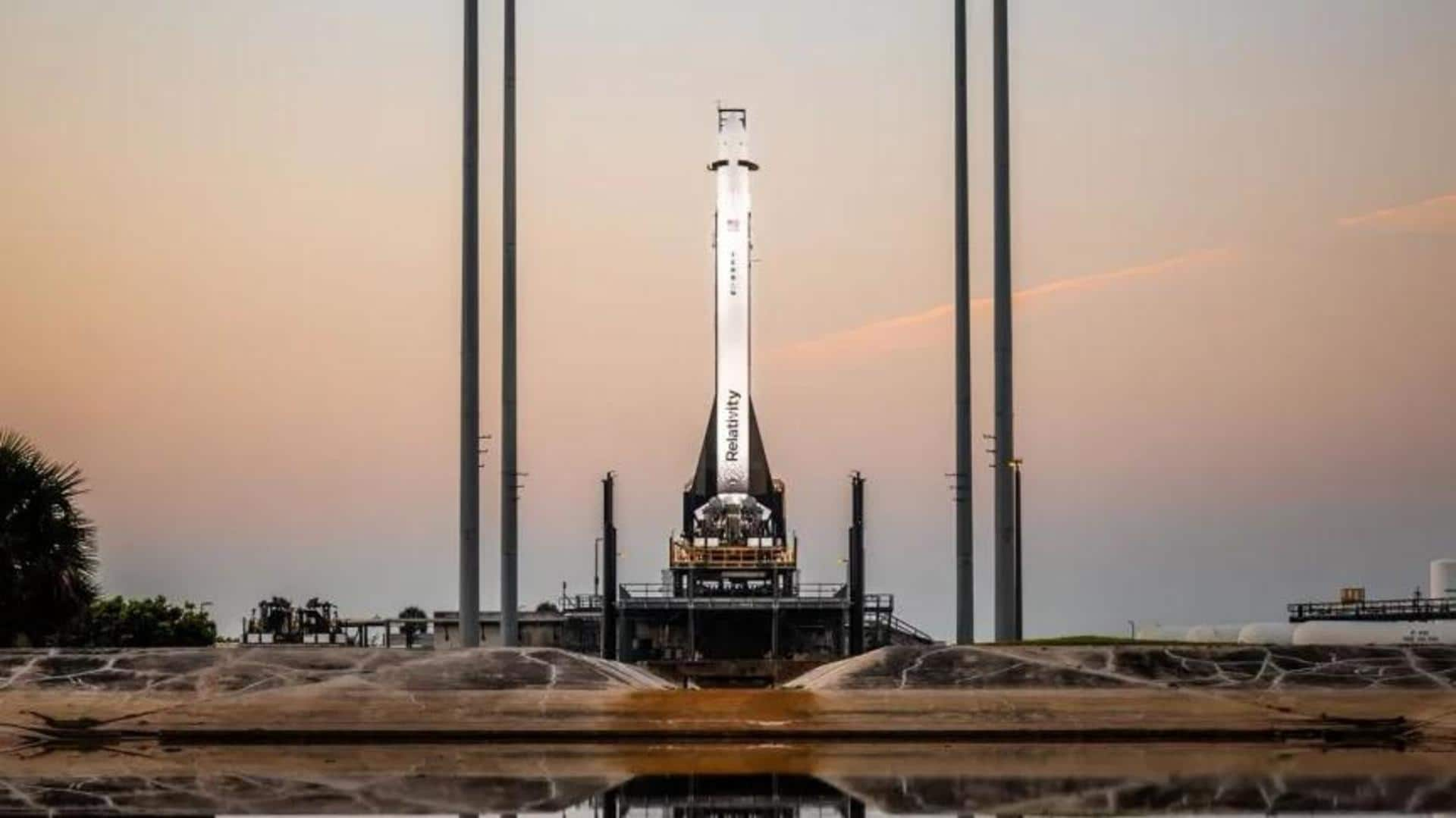
World's first 3D-printed rocket launched but didn't reach orbit
What's the story
Relativity Space's Terran 1, which is the world's first 3D-printed rocket, took off successfully on March 23 but it failed to reach orbit.
The rocket lifted off from Cape Canaveral, Florida but the launch vehicle encountered an issue with the upper stage as it was headed toward low Earth orbit (LEO).
The rocket was not carrying any payload during its maiden flight.
Context
Why does this story matter?
While rockets with 3D-printed parts have flown to space before, Terran 1 is the first-ever rocket to be almost completely via 3D printing.
It is the largest ever 3D-printed object and was created using the world's largest 3D metal printers, as per Relativity Space.
The company also claims their 3D-printed boosters will offer a relatively low-cost option to launch small commercial satellites into space.
Details
Terran 1 would have been the first "methalox" rocket
Terran 1 is fueled by liquid methane and liquid oxygen and would have been the first such "methalox" rocket to reach orbit, had it been successful, along with being the first 3D-printed vehicle to do so.
The company said that the teams will analyze data gathered from the launch to determine what happened and will provide updates in the coming days.
Failure
What went wrong?
Initially, Terran 1 performed well. It survived Max-Q-the point during the flight where structural loads on the rocket are highest.
The first and second stages also separated successfully.
However, around three minutes into flight, the rocket faced an anomaly with the upper stage, preventing it from reaching orbit.
The upper stage is built to ignite separate engines during flight to propel them into space.
Mission
85% of the rocket is 3D-printed
The test mission, called "Good Luck, Have Fun," was designed to study if the rocket can withstand real launch conditions and make it to space.
The 110-foot-tall rocket is capable of delivering up to 1,250 kilograms to LEO.
85% of its mass is 3D-printed, including the nine Aeon 1 engines used in its first stage and the one Aeon Vacuum engine in the second.
Milestones
The launch proved that "3D-printed rockets are structurally viable"
"No one's ever attempted to launch a 3D-printed rocket into orbit, and, while we didn't make it all the way today, we gathered enough data to show that flying 3D-printed rockets is viable," said Arwa Tizani Kelly, technical program manager at Relativity Space.
Although Terran 1 did not make it to orbit, the launch proved that "3D-printed rockets are structurally viable."
Previous launch attempts
The previous two launch attempts were unsuccessful
This was the third launch attempt for the Terran 1 rocket.
It was originally scheduled to take off on March 8 but the launch was called off last minute due to issues with fuel temperatures on the rocket's upper stage.
The second attempt on March 11 was scrubbed after two last-minute aborts due to weather and range safety delays.
Information
Terran R can deploy over 20,000 kilograms to the LEO
The company is also building a larger, fully reusable rocket called Terran R, which will also be fabricated via 3D printing. The 216-foot-tall rocket will be capable of hauling up to 20,000 kilograms to LEO. It is scheduled to launch next year.